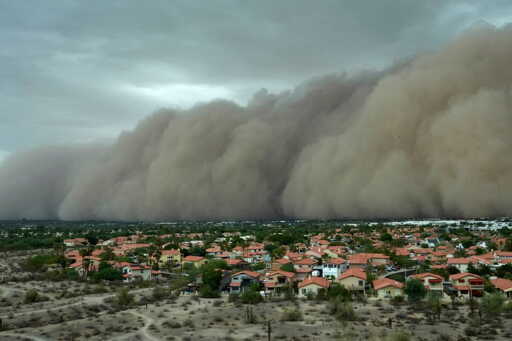Climate change is disturbing wind patterns across the globe in dramatic ways. And when combined with land-use change and desertification, these changes are spawning immense sand and dust storms that pose an ever-increasing risk to human health. These mega wind storms now affect an estimated 330 million people annually, exposing communities to harmful particulate matter, and sometimes including toxic materials. That’s according to a warning released by the World Health Organization and World Meteorological Organization earlier this year. “The frequency and severity of sand and dust storms is increasing, and it’s increasing globally,” says Aaron Cohen, principal scientist emeritus with the Health Effects Institute, who was part of an international team of scientists who recently advised that such storms present a “growing global health threat.” “[S]and and dust pollution travels over very long distances. And it isn’t just carrying dust and sand; it picks up all kinds of other pollutants,” Cohen explains. These intensifying storms have been linked to respiratory and cardiovascular illnesses, while also being directly linked to meningitis outbreaks in the Sahel region of Africa. According to a WMO and WHO analysis, around 3.8 billion people were exposed to dust levels exceeding the WHO’s safety threshold between 2018-2022; that’s a 31% increase from the 2.9 billion people exposed during 2003-2007. Concerningly, these sand and dust storms are now occurring in, and affecting, areas not previously considered sources of dust, says Sara Basart, a WMO scientific officer who leads the Sand and Dust Storm Warning Advisory and Assessment System.…This article was originally published on Mongabay
From Conservation news via this RSS feed


